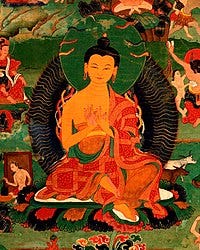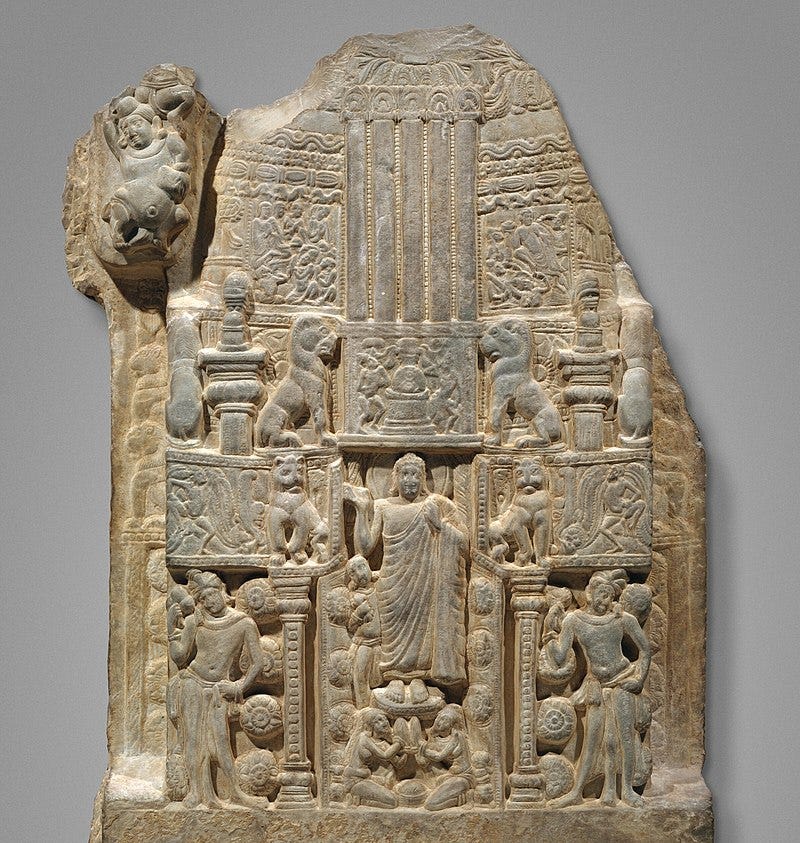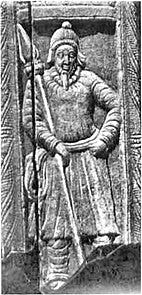One of the famous Buddhist sites of Andhra Pradesh, that was once a large monastic university complex, attracting students from as far as China, Sri Lanka, Gandhara.The place was originally called Vijayapura, and named later after Nagarjuna, a noted Indian Mahayana Buddhist philosopher monk, considered one of the greatest thinkers of Asian philosophy.
The place rose to prominence in the first quarter of the 3rd century, following the decline of the Satavahanas and the Andhra Ikshvaku ruler Vashishthiputra Chamamula establishing his capital at Vijayapuri here. As per the coins and inscriptions here, four kings of the dynasty are mentioned, Vashishthiputra Chamamula , Mathariputra Virapurushadatta, Vashishthiputra Ehuvala Chamtamula and Vashishthiputra Rudra Purusha Datta.
The Ikshavakus constructed several temples dedicated to Kartikeya, Shiva, while their queens and Buddhist upasikas like Bodhishri and Chandrashri, constructed several Buddhist monuments at the site. During the early years, the place had more than 30 Buddhist viharas.
After the fall of the Ikshavakus, the place too declined in it’s power, during the 7th and 12th centuries, brick shrines were built by the Vengi Chalukyas in Krishna river valley nearby. Later it was part of the Kakatiya empire, and regained it’s glory during the 15th and 16th centuries under the Reddy Rajulu of Kondavidu.
The site was discovered in 1926 , by a school teacher Suraparaju Venkataramayya, who saw a pillar here and reported it to the Madras Presidency Government. Shravasti, the Telugu language assistant to the Archaeological Superintendent for Epigraphy of Madras, visited the site and saw it’s potential. The first excavations were made by French archaeologist Gabriel Jouveau-Dubreuil while English archaeologists under A. H. Longhurst, organized a systematic excavation between 1927-31.
TN Ramachandran led another expedition in 1938, resulting in discovery of some more monuments. When the Nagarjunasagar Dam construction began in 1954, the site was threatened with submergence. It was then R Subrahmanyam started large scale excavations to salvage the relics and artifacts there, between 1954-60, resulting in discovery of a large number of them dating from Early Stone Age to the 16th century. Around 14 large scale replicas of the excavated ruins were established on the Nagarjunakonda hill, along with a museum there. While some of the other sculptures made their way to museums in Delhi, Chennai, Kolkata, Paris and New York.
The inscriptions here show that the Andhra Ikshavaku kings and their queens, patronized Buddhism, the monasteries here belonged to both Bahuśrutīya and Aparamahavinaseliya sub-schools of the Mahāsāṃghika, Mahīśāsaka and Tamrashatiya schools based in Sri Lanka. There is also a footprint at the site of the Mahaviharavasin monastery believed to be that of Gautama Buddha’s.
The Great Stupa here belongs to the class of uncased stupas, it’s brickwork being plastered all over, and decorated by a large garland like ornament. The original stupa was renovated by Ikshavaku princess, Chamtisiri, in the 3rd century, when ayaka-pillars of stone were erected. The stupa was 32.3m in diameter, height of 18 m, with a 4 m wide circumambulatory.
Most of the Hindu ruins here are primarily Shaivite, one of the temples has an inscription showing name as Mahadeva Pushpabhadraswami, while stone images of Karthikeya were found at other shrines. There are also Roman coins here, in particular Aurei of Tiberius and another of Faustina the Elder.
There are also reliefs of Indo-Scythian soldiers wearing caps and coats, as per an inscription, the Ikshavaku ruler had a garrison of Scythian guards.
The inscriptions here also describe the variety of Buddhist monks, as acharyas and theriyas of the Vibhajyavada school. The inscriptions are primarily Prakrit, or Sanskrit, both written in the Brahmi script. The usage of Sanskrit down South, can probably be attributed to the influence of the Western Satraps( Sakas), whom promoted it’s usage and had close relation with the South Indian rulers.
The iconic Nagarjuna Sagar Dam, that straddles across the Andhra-Telangana border is also located here, providing irrigation to districts of Guntur, Krishna, Prakasam in Andhra Pradesh, Khammam, Nalgonda in Telangana. Constructed between 1955-67, this huge masonry dam has a water storage reservoir of with gross storage capacity of 11.472 billion cubic metres, it is 407 ft tall from it’s deepest foundation, and 5200 ft long with 26 flood gates, each 42 ft wide and 45 ft tall.
The Raja of Muktyala Samsthanam, Raja Vasireddy Ramagopala Krishna Maheswara Prasad, played a major role in construction of the dam, actively lobbying for it, and donating 52 lakh rupees as well as 55,000 acres of land for the purpose, while renowned civil engineer Kanuri Lakshmana Rao was the chief engineer of the project.
If you are seeking to visit Nagarjunakonda, there is a ferry service from the mainland, where you get a panoramic view of the Krishna valley. You also have the Ethipothala falls here, known for it’s crocodile breeding center.













